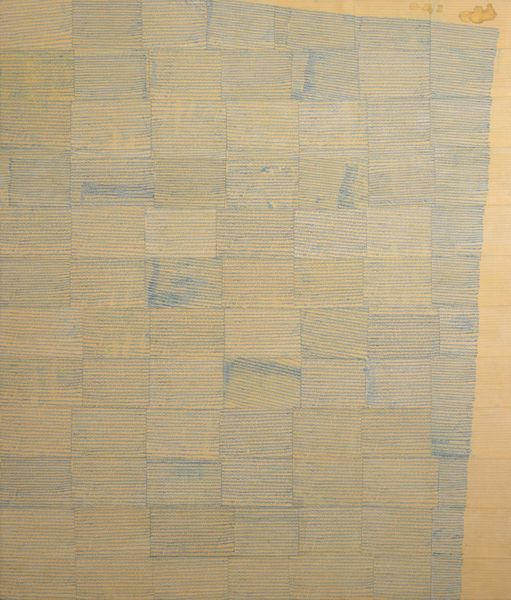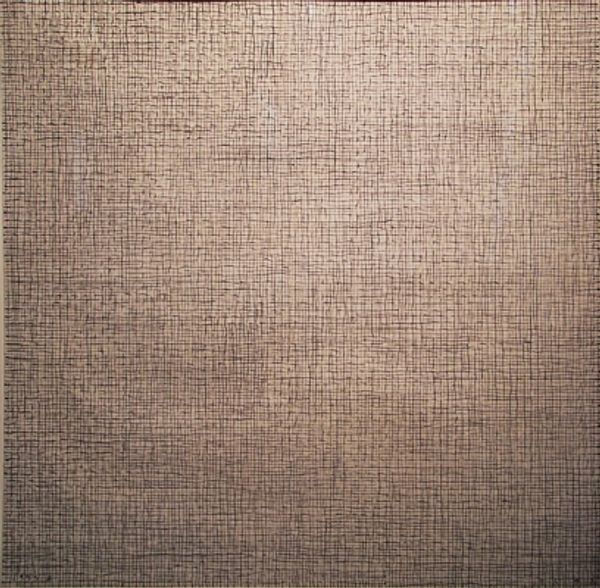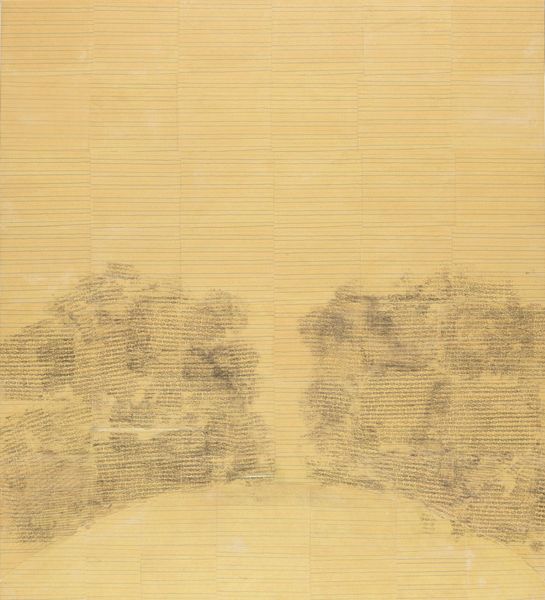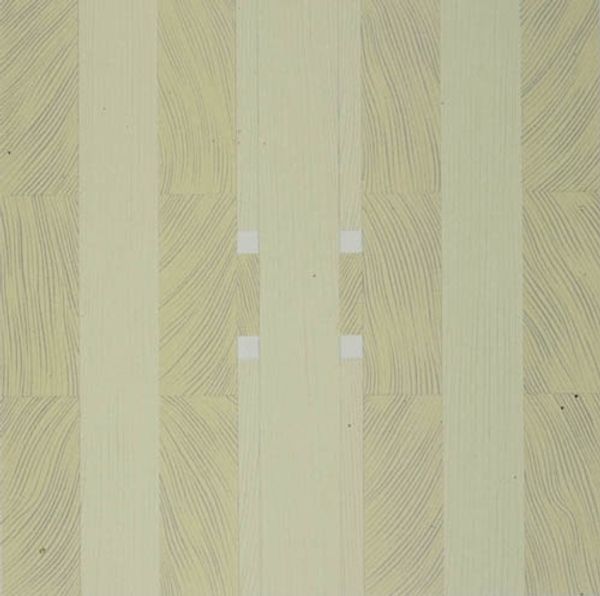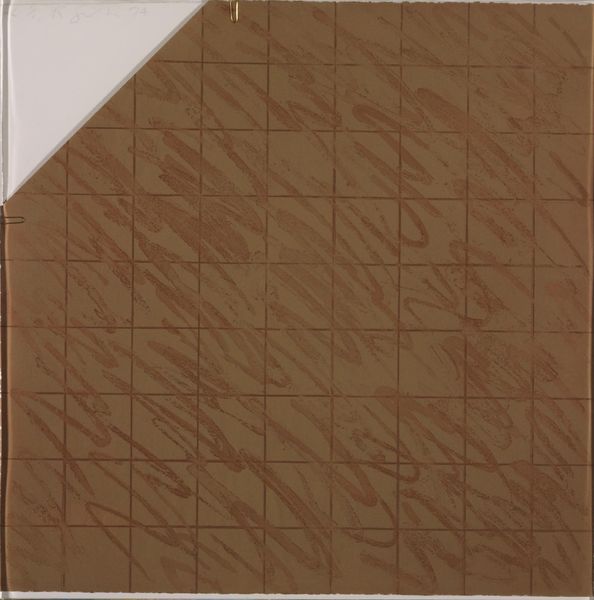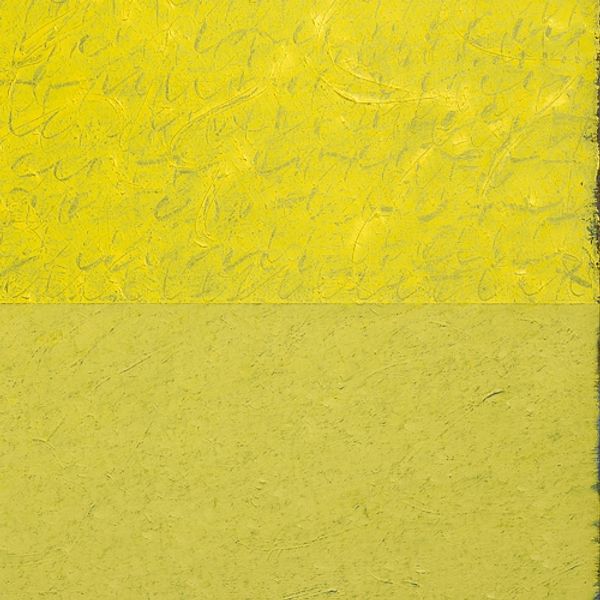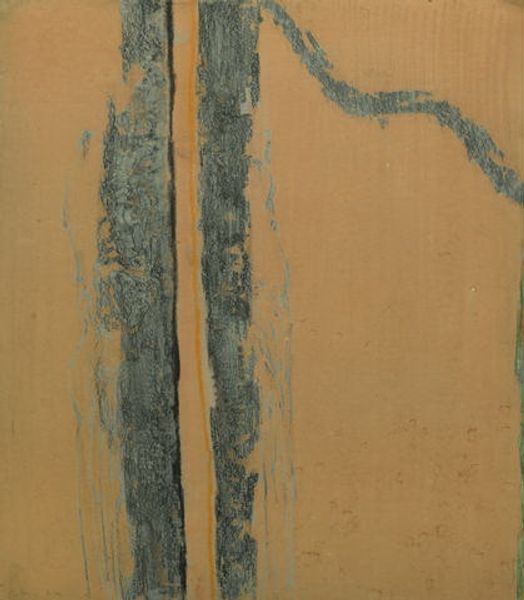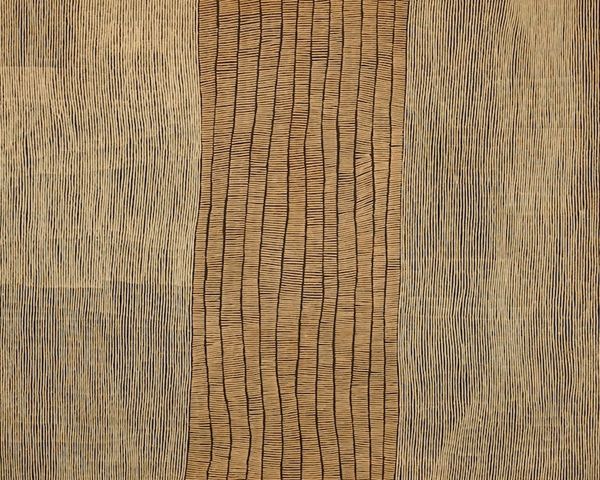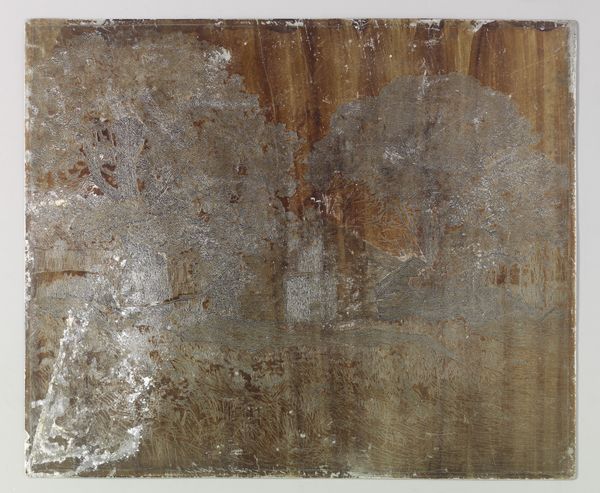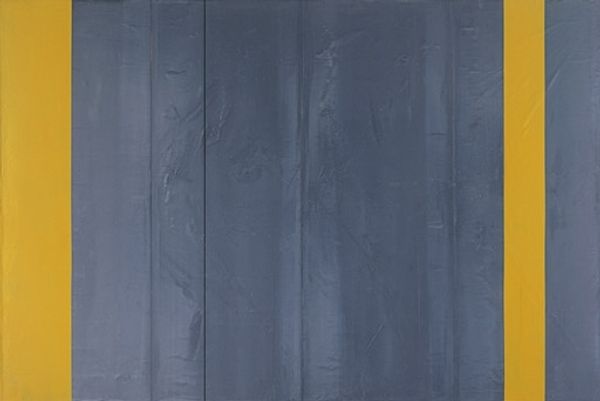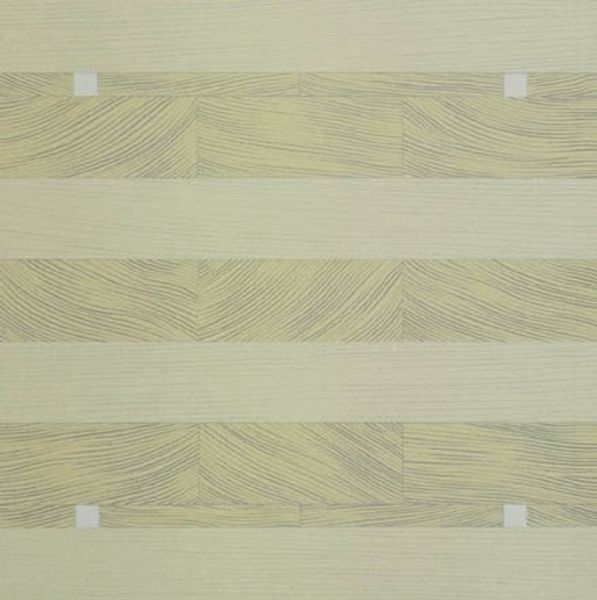
#
afrofuturism
Copyright: Ellen Gallagher,Fair Use
Curator: This is Ellen Gallagher’s “Paper Cup,” created in 1996. It's crafted with watercolor and paper, showcasing her explorations in geometric abstraction. Editor: It strikes me immediately as almost hypnotic, this delicate grid of blues on tan. The scale feels surprisingly human, given the geometric repetition. What are the dimensions? Curator: Approximately 20 x 16 inches. Gallagher's practice is really centered on the layering of materials and meanings. Here, the paper itself, humble and readily available, becomes the foundation for this meticulous mark-making. The means of production, from paper pulp to watercolor strokes, is front and center, disrupting traditional art hierarchies. Editor: Absolutely. The choice of paper elevates it, especially given how integral paper—particularly printed media—has been to the dissemination of both positive and harmful imagery of Black people throughout history. Do you see that echoed here? Curator: It’s impossible to ignore the historical context. Gallagher, as a Black artist, reclaims these mundane materials, challenging our assumptions about value and labor. Consider how her work, in its repeated gestures, resembles the intensive, often unacknowledged labor embedded in paper production itself. The visual structure subtly nods towards minimalist aesthetics, yet imbued with deeper sociopolitical meaning. Editor: It also makes me think about systems and the role of institutions in reinforcing or challenging those systems. Museums themselves often grapple with this tension, attempting to preserve while simultaneously dismantling legacies of oppression. Seeing "Paper Cup" on the wall, I wonder, what part can art play in actively contributing to this societal shift? Curator: By highlighting material, production, and the historical context, the artwork invites such conversations. It uses accessible means to address complex topics. It prompts the viewer to reconsider the role of the object in culture, what gives an object importance. Editor: I leave seeing "Paper Cup" considering not just Gallagher's artistic choices, but my own role in the act of interpretation. What labor do I bring? What assumptions must I shed? Curator: A truly salient question that reveals just how material engages us both bodily and ethically within historical discourse.
Comments
No comments
Be the first to comment and join the conversation on the ultimate creative platform.
